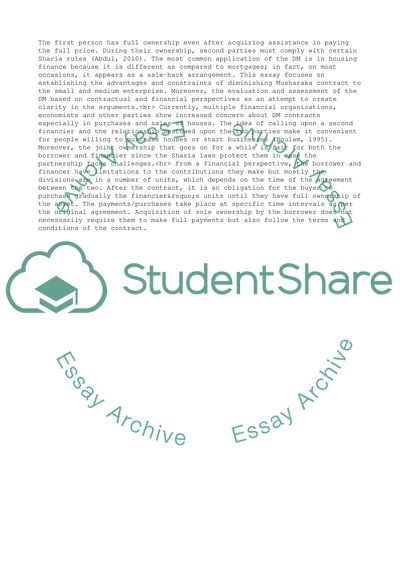Cite this document
(Diminishing Musharaka Contract Research Paper Example | Topics and Well Written Essays - 5000 words, n.d.)
Diminishing Musharaka Contract Research Paper Example | Topics and Well Written Essays - 5000 words. Retrieved from https://studentshare.org/business/1864300-the-advatages-constrains-of-the-diminshing-musharakah-contract-to-small-meduim-size-enterprise
Diminishing Musharaka Contract Research Paper Example | Topics and Well Written Essays - 5000 words. Retrieved from https://studentshare.org/business/1864300-the-advatages-constrains-of-the-diminshing-musharakah-contract-to-small-meduim-size-enterprise
(Diminishing Musharaka Contract Research Paper Example | Topics and Well Written Essays - 5000 Words)
Diminishing Musharaka Contract Research Paper Example | Topics and Well Written Essays - 5000 Words. https://studentshare.org/business/1864300-the-advatages-constrains-of-the-diminshing-musharakah-contract-to-small-meduim-size-enterprise.
Diminishing Musharaka Contract Research Paper Example | Topics and Well Written Essays - 5000 Words. https://studentshare.org/business/1864300-the-advatages-constrains-of-the-diminshing-musharakah-contract-to-small-meduim-size-enterprise.
“Diminishing Musharaka Contract Research Paper Example | Topics and Well Written Essays - 5000 Words”, n.d. https://studentshare.org/business/1864300-the-advatages-constrains-of-the-diminshing-musharakah-contract-to-small-meduim-size-enterprise.


